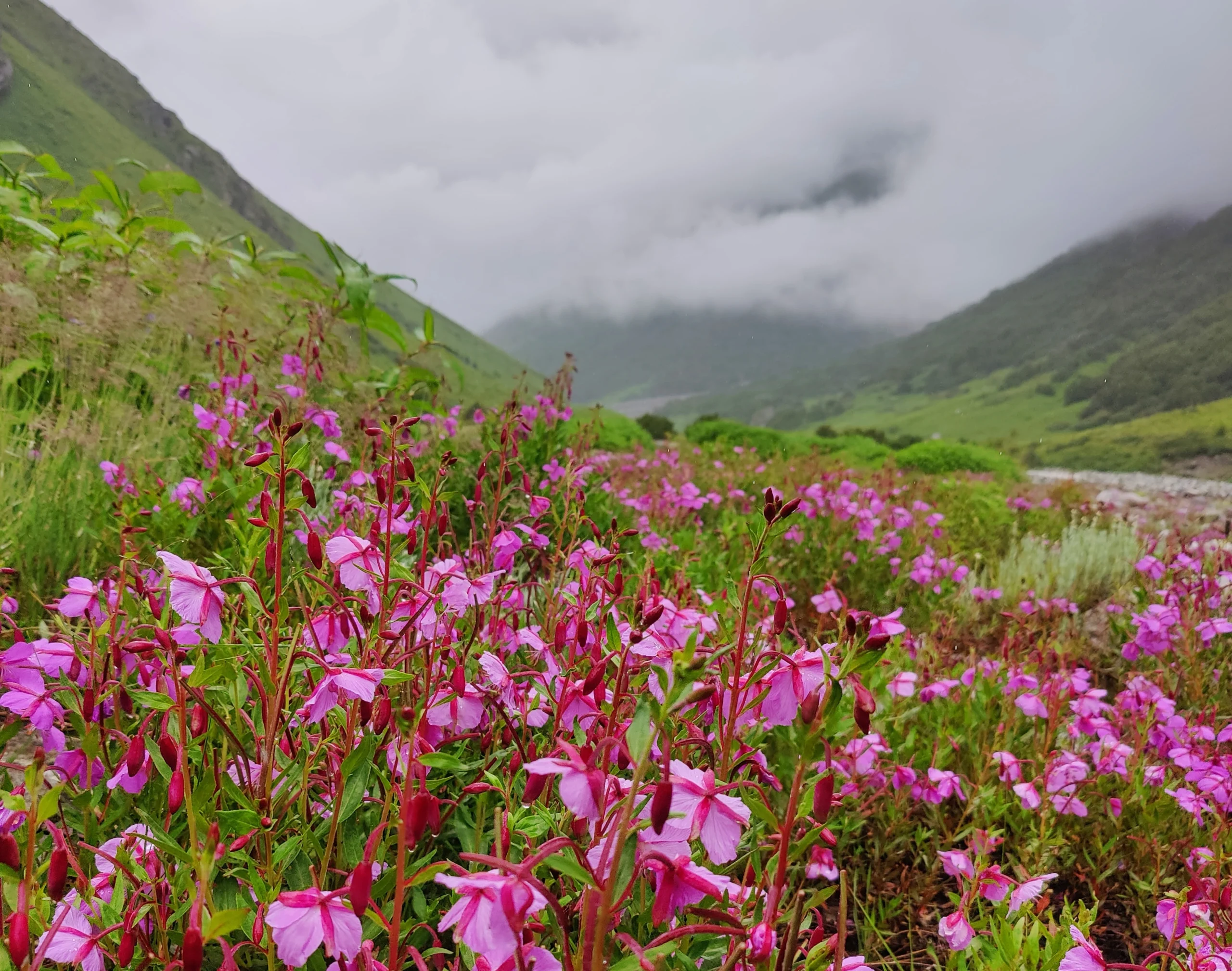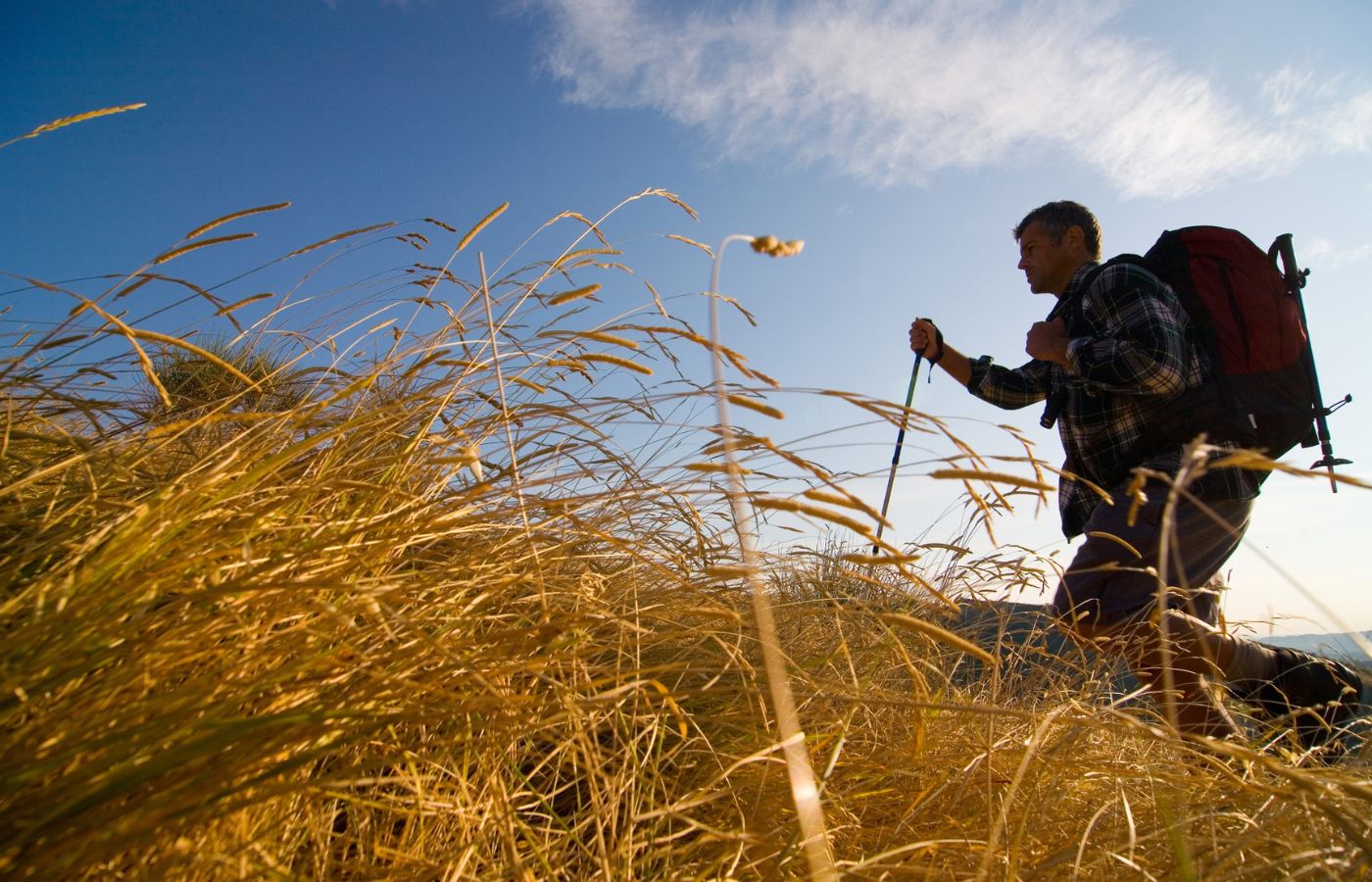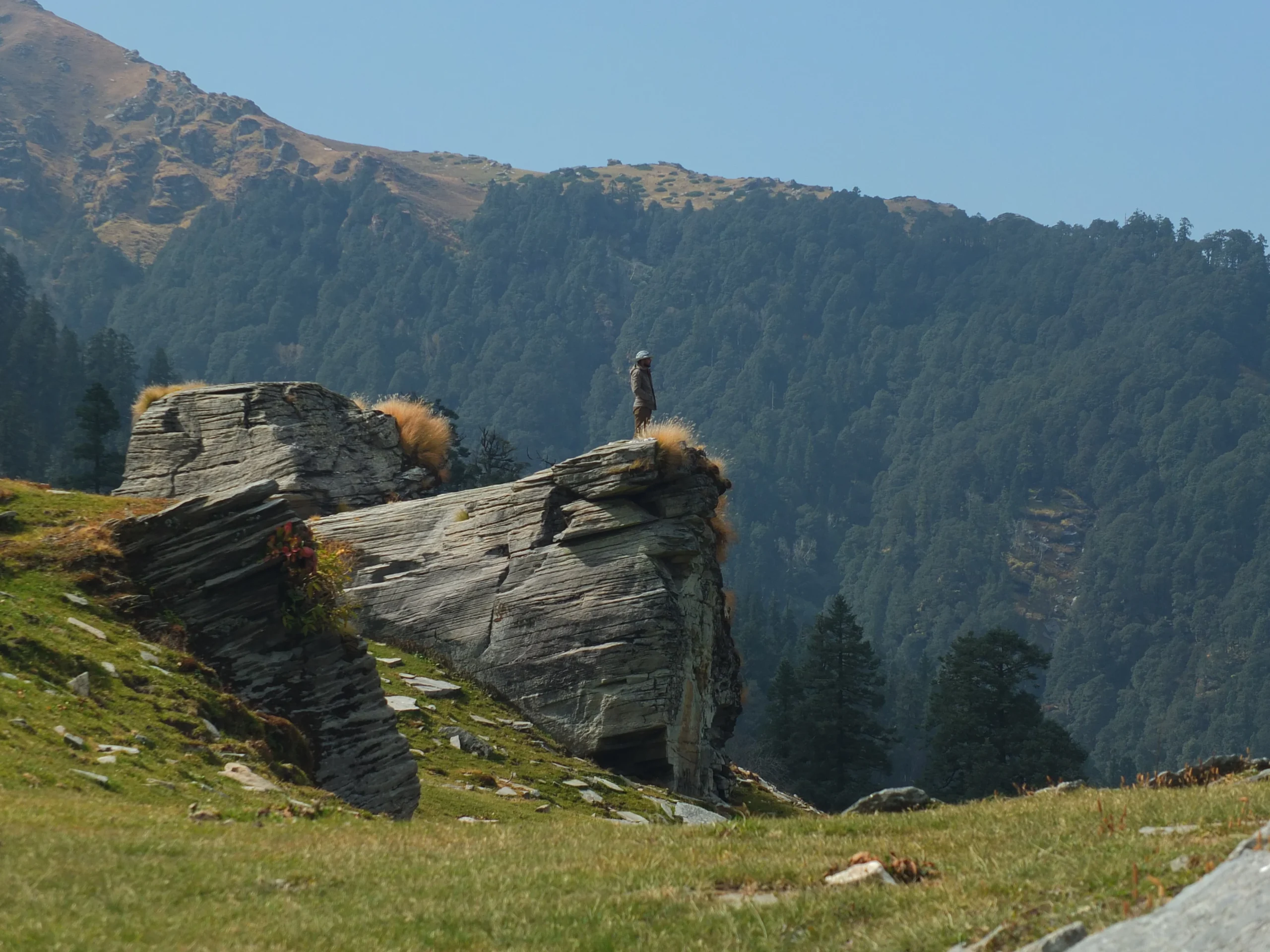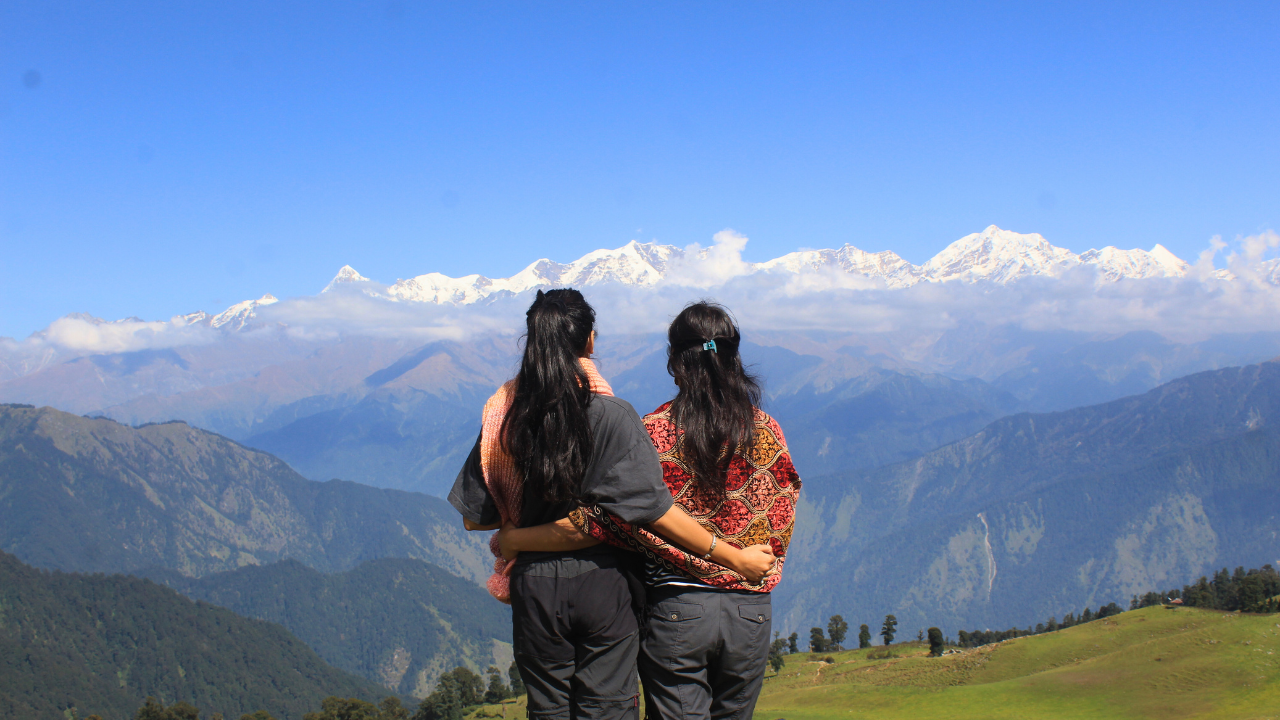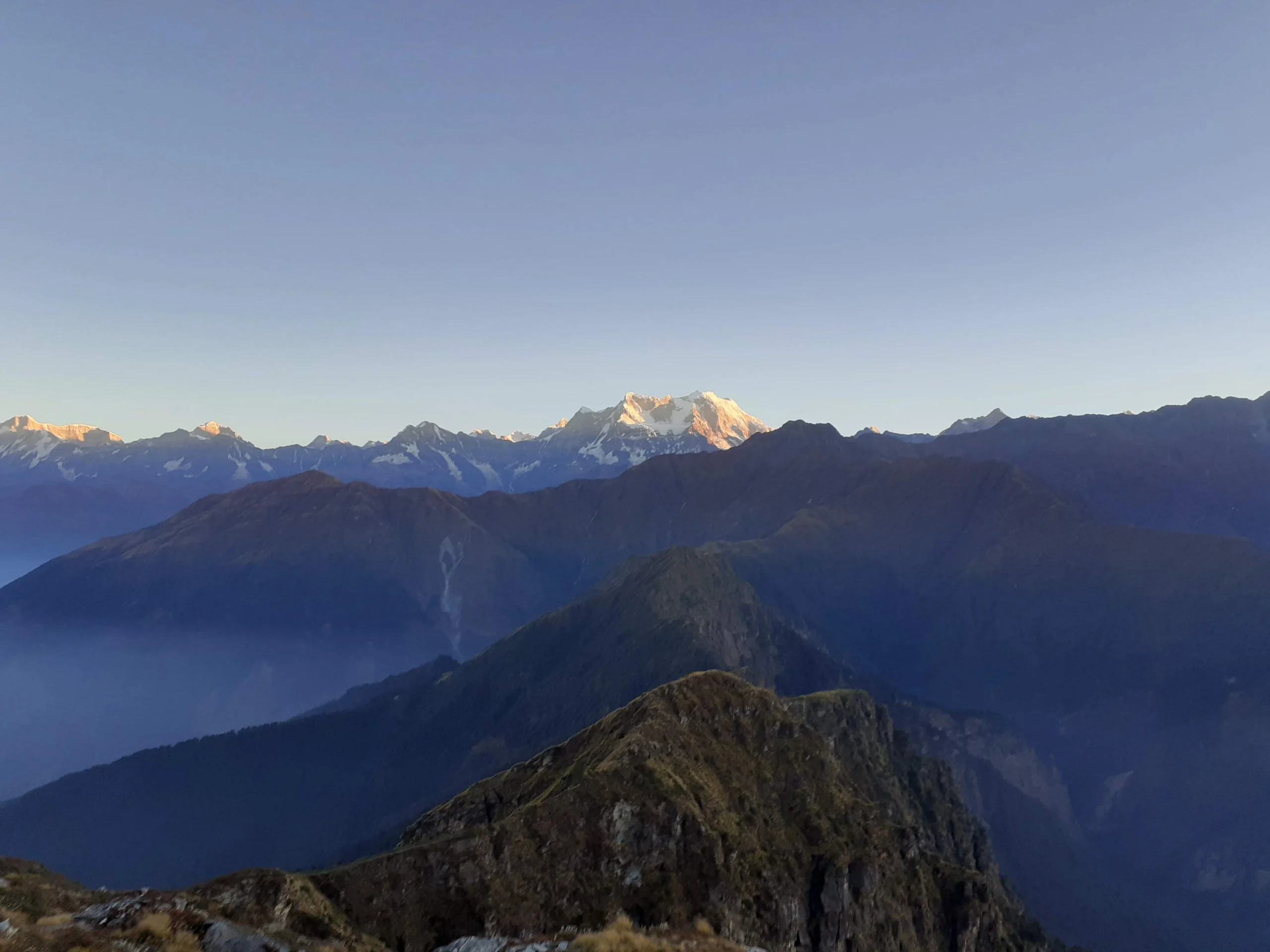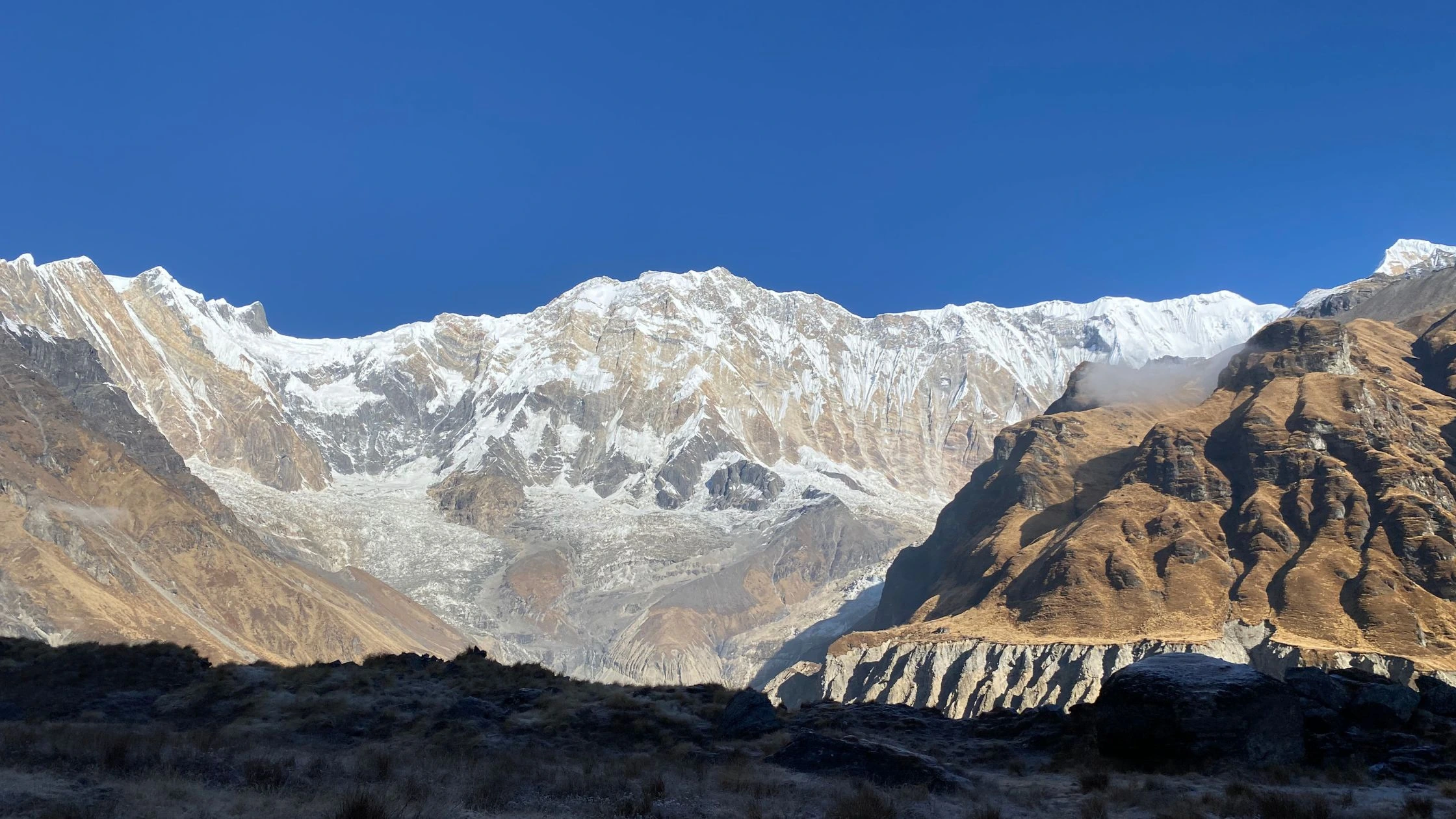High in the mountains of Uttarakhand, India, the Valley of Flowers National Park is a hidden treasure. Covering 87.5 square kilometers at 3,352 to 3,658 meters, this special place in Chamoli district is packed with colorful flowers and quiet animals.
It’s a UNESCO World Heritage Site where nature shows off its beauty. This blog explores the valley’s plants and wildlife, explaining what makes it so unique and why it needs care.
Fields Full of Flowers
Every July and August, the Valley of Flowers turns into a giant garden. Botanist C.P. Kala found over 520 types of plants here, with nearly 500 that bloom. The meadows light up with reds, blues, yellows, and pinks, surrounded by rocky hills and streams. It’s like nature decided to throw a big party.
Variety of Flowers
Some flowers grab attention. The Brahma Kamal, Uttarakhand’s state flower, has white, star-shaped petals and grows in rocky spots. Locals use it in prayers at Nanda Devi’s temple. The Himalayan blue poppy is another star, with bright blue petals that seem to glow. Primulas, marigolds, orchids, and anemones cover the ground, adding to the show.
These flowers do more than look pretty. Some, like Aconitum and Picrorhiza, help people feel better by treating things like fevers or stomach aches. But 31 kinds are rare and might disappear, so protecting them is important. Each flower helps keep the valley alive.
Strong Trees
Trees also play a big role. Himalayan maples, firs, and birches grow on steep slopes, holding the soil so it doesn’t slide away. Rhododendrons make shady spots for smaller plants. These trees stand tough through cold winters, making sure the meadows can bloom again.
Changing with the Seasons
The valley’s look changes through the year. In June, snow melts, and primulas start to show. August brings the most color, with Impatiens and Campanulas all over. By September, flowers fade to yellow, and snow covers everything from November to May. August is the best time to see the flowers, but rain can make trails slippery, so it’s smart to check the weather.
Animals That Stay Hidden
The valley’s animals are hard to spot. There are only 13 types of mammals, and most are rare. They hide in the rocks and grass, making every glimpse feel special.
Animals of the Mountains
Snow leopards are the sneakiest, moving through high cliffs like shadows. Black bears and brown bears wander here but avoid people. Himalayan tahrs, which look like goats, eat grass and spread seeds. Musk deer, goral, and bharal stay on rocky hills. Red foxes and grey langurs pop up now and then, and flying squirrels glide at night. These animals don’t need to be seen to matter, they’re part of the valley’s story.
Birds and Butterflies
Birds bring sound to the quiet. The Himalayan monal pheasant, with shiny, colorful feathers, sits on rocks. Vultures fly high, and choughs hop around flowers. Common Mormon butterflies flutter from bloom to bloom, helping flowers grow by carrying pollen. These little creatures keep things running.
Keeping the Valley Safe
The Valley of Flowers paradise hasn’t always been protected. Before it became a national park in 1982, herders grazed cattle here, trampling delicate plants. Conservationists stepped in, banning grazing and earning the valley UNESCO status in 2005 as part of the Nanda Devi Biosphere Reserve. Walking the trails, you can see the results, meadows thriving, rare flowers rebounding. But the valley’s not out of danger.
The Human Footprint
Tourism is a double-edged sword. In 2016, about 10,000 people visited the valley, and nearby Hemkund Sahib draws lakhs of pilgrims yearly. That’s a lot of boots on fragile soil. You might see plastic bottles and wrappers littering parts of the trail, a gut punch in such a pristine place. Deforestation for hotels and roads also looms, and landslides are common in monsoon season. Weeds like Polygonum have crept in, but they might help stabilize slopes. It’s a tricky balance, loving a place without loving it to death.
Ways to Help
The Uttarakhand Forest Department keeps a close eye, restricting development and patrolling trails. Locals play a big role too, guiding trekkers or running homestays to support conservation. People who visit can help by staying on paths, not picking flowers, and taking all their trash. Small actions make a big difference.
Visiting the Valley
The trip to the Valley of Flowers starts at Govindghat. It’s a 17-kilometer hike to Ghangaria, then 4 more to the valley. The path is steep and sometimes muddy, but it goes by rivers, trees, and waterfalls. Ghangaria is a busy spot with trekkers and tea shops.
August is perfect for seeing flowers, but rain can make roads tricky, so check before going. Guides know the plants and animal tracks, which makes the hike more fun. Bring sturdy shoes, warm clothes, and a camera. Stay on the trail and don’t leave anything behind to keep the valley clean.
Why the Valley Is Special
The trek to the Valley of Flowers is no walk in the park. Starting from Govindghat, it’s a 17-kilometer journey via Ghangaria, with steep climbs and unpredictable weather. Your calves might burn, and the thin air can make every step a negotiation, but the rewards are worth it. The trail winds along the Laxman Ganga and Pushpawati rivers, past mossy forests and waterfalls. Ghangaria, the base camp, is a bustling hub of trekkers and pilgrims, with cozy tea stalls.
The valley itself is a 4-kilometer trek from Ghangaria, moderate but demanding at high altitude. For photographers, the valley is a dream, with every angle offering a new composition. For wildlife seekers, patience is key, binoculars and early mornings increase your chances of spotting fauna. Our advice? Pack sturdy shoes, a warm jacket, and a good camera. And don’t rush. The valley reveals its secrets to those who stay.
Final Words
The Valley of Flowers is a living portrait of Himalayan grit. Its 520 plant species, many found nowhere else, and its rare creatures, from snow leopards to butterflies, mark it as a global treasure. Conservation has shielded it, but its future rests on shared care.
Stepping into the valley reveals a world where wildflowers defy rocky odds and animals carve quiet lives. It’s a place that shows nature’s strength and asks for humanity’s gentleness in return.
Also check out the blog on – Best time to visit Valley Of Flowers
If you are looking for vibrant experience in the himalayas connect with: mountainiax

